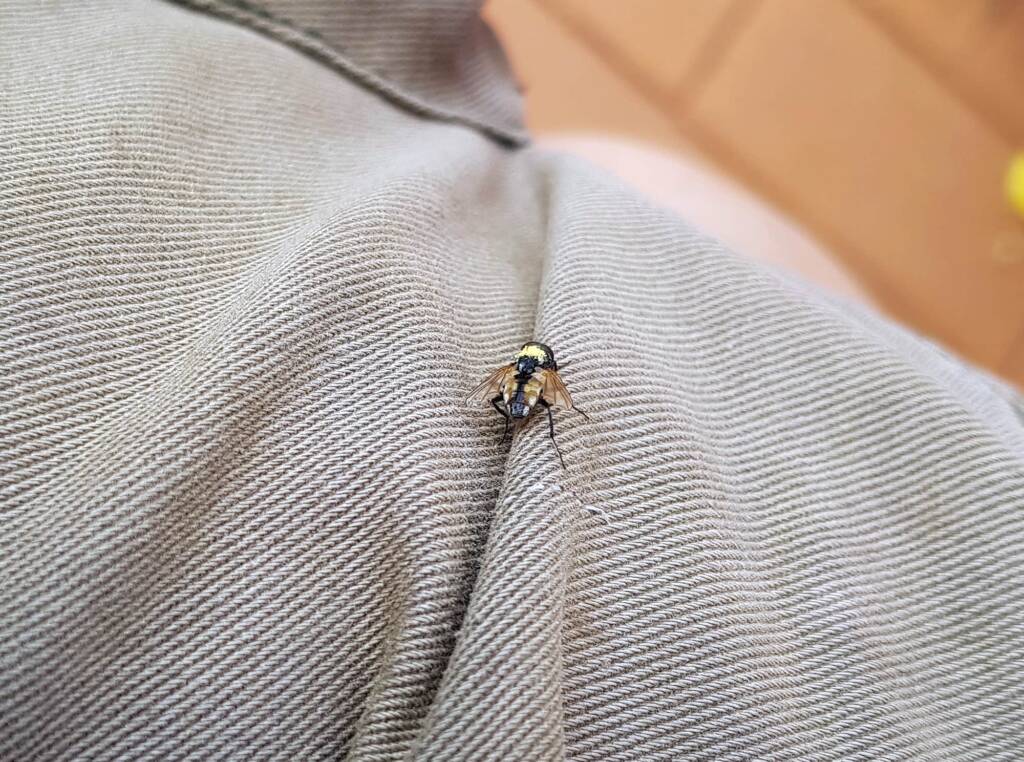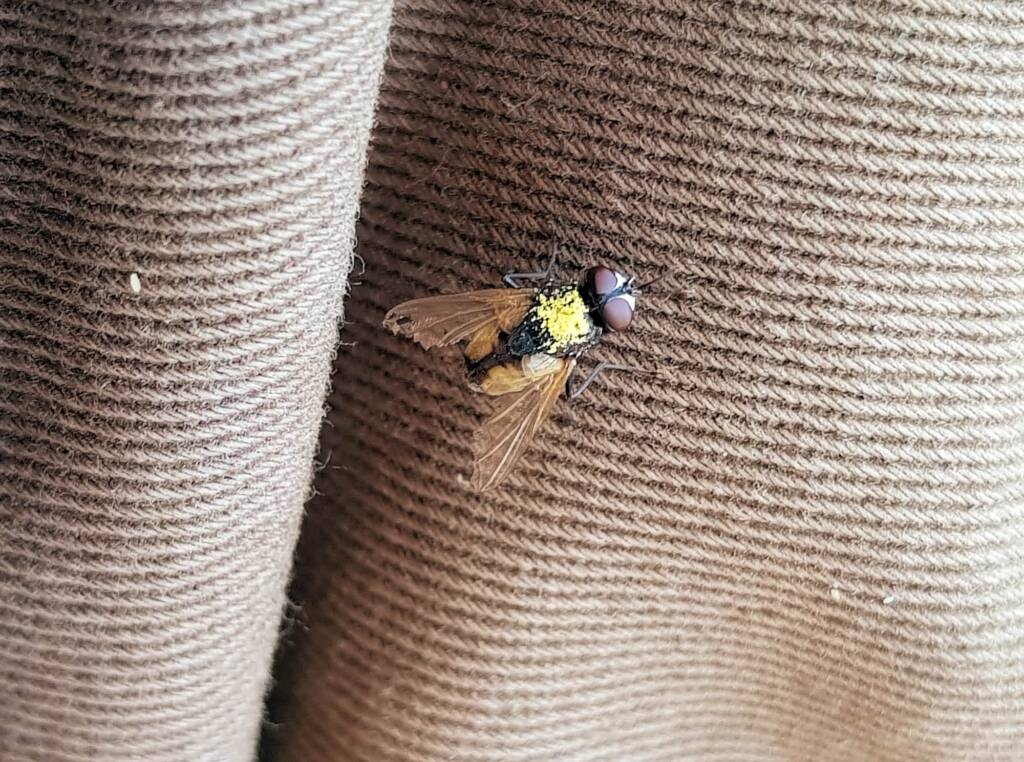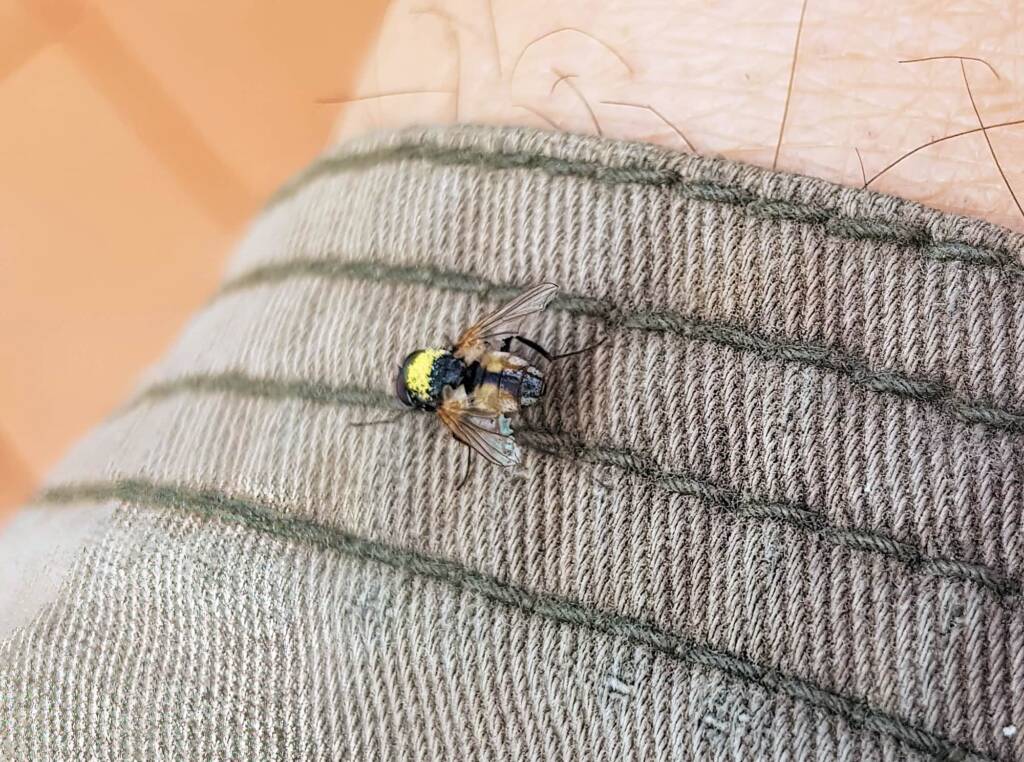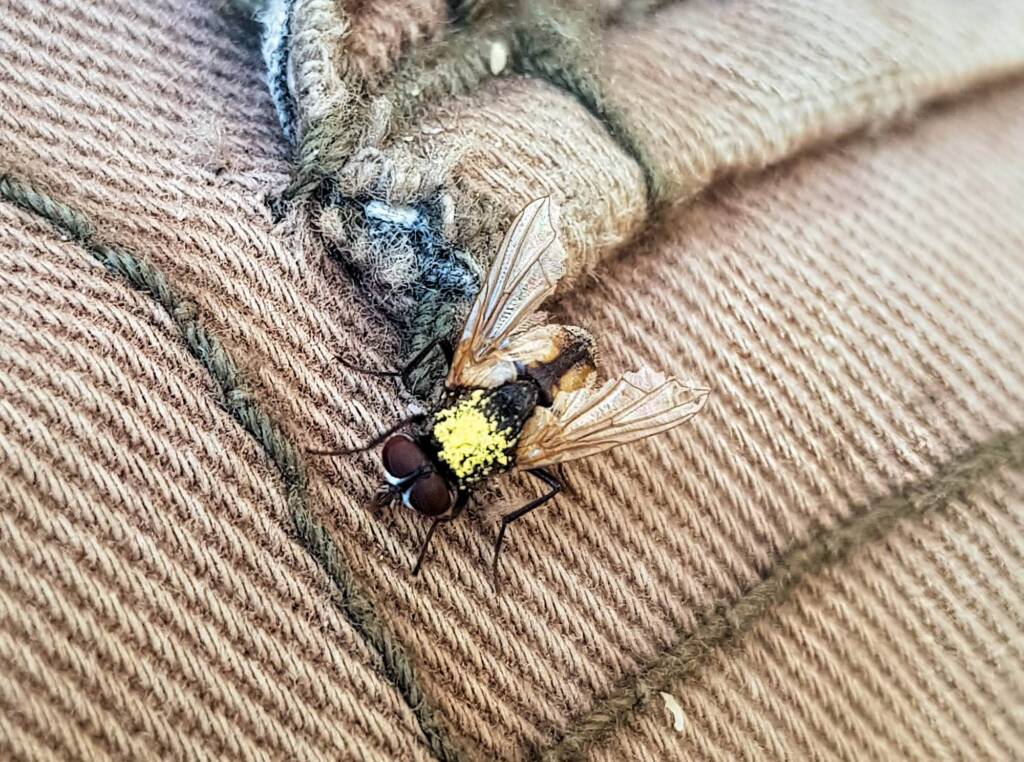DipteraDiptera – image index Flies Pollinators and Flies Australian Sheep Blowfly (Lucilia cuprina) Australian Drain Fly Balaana Beefly Bat Flies Bee Flies Bee Fly (Anthrax) Ligyra Australiphthiria Chrysomya saffranea Eristalinus punctulatus Musca Odontomyia (Soldier Flies) Robber Flies Sarcophaga aurifrons Soldier Fly Syrphids
The Musca (genus) include the housefly. Many people probably would not associate flies as flower pollinators, yet many are, being attracted by both nectar and pollen. Whilst they may have the foraging behaviour similar to bees, unlike bees, they are not known to visit specific plant species, instead visiting a variety of flowers.
Fly visitors from at least 71 families of Diptera have been recorded in the literature to flowers in 137 plant families (Larson et al., 2001). The families Syrphidae (hoverflies), Bombyliidae (bee flies), and the Muscidae are especially common as flower visitors.1
Pollinators, Role of, Authors D.W. Inouye, J.E. Ogilvie, in Reference Module in Life Sciences, 2017, Muscidae, ScienceDirect
The genus Musca of the order Diptera includes Musca domestica (commonly known as the housefly), and the Musca autumnalis (commonly known as the face fly or autumn housefly).
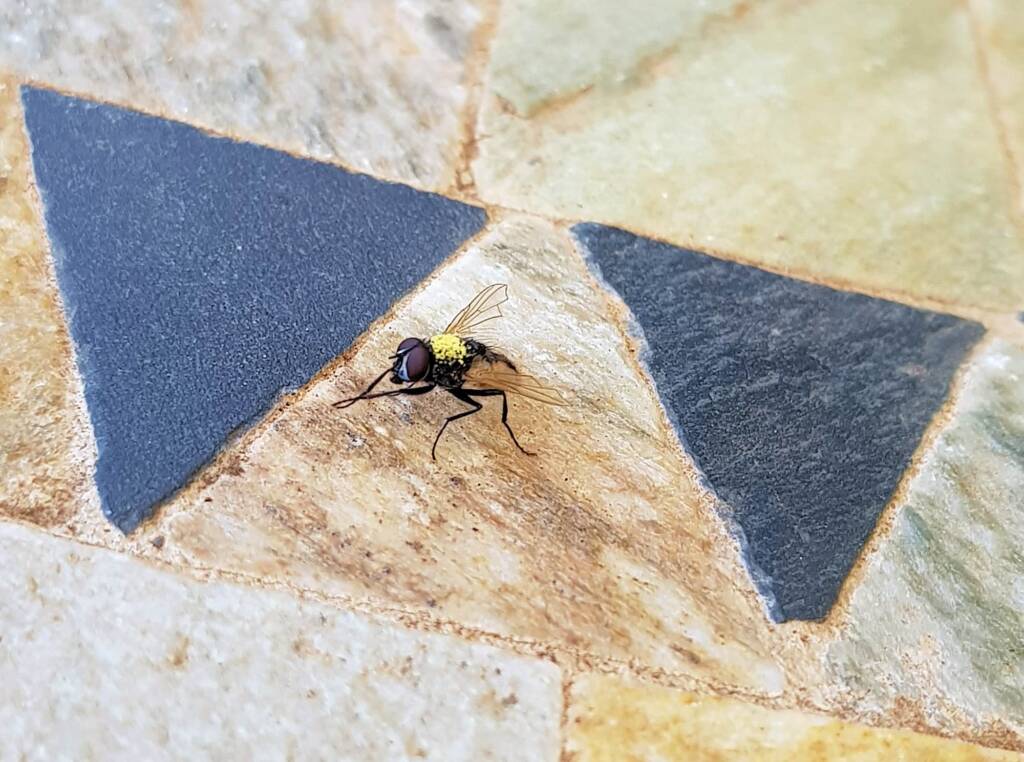
At the time of writing, Wikipedia had listed 85 species/subspecies.
Pictured here (yet to be confirmed), is possibly the Australian Bushfly (Musca vetustissima) or the Common Housefly (Musca domestica). You can see the slight battered wings, indicating that most likely an older mature fly.
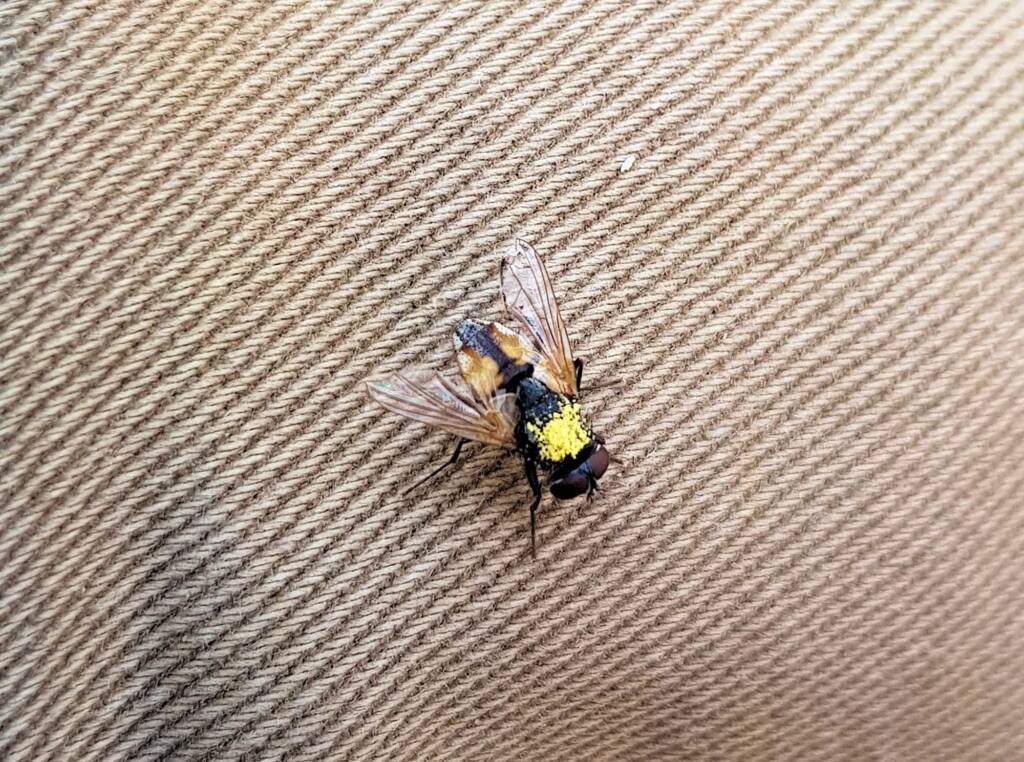
Musca comes from the Latin word for “the fly”. It is also the name of a small constellation in the deep southern sky.3
- Scientific classification
- Kingdom: Animalia
- Phylum: Arthropoda
- Subphylum: Hexapoda
- Class: Insecta
- Informal: Pterygotes
- Order: Diptera
- Suborder: Brachycera
- Infraorder: Cyclorrhapha
- Informal: Schizophora
- Informal: Calyptratae
- Superfamily: Muscoidea
- Family: Muscidae
- Subfamily: Muscinae
- Genus: Musca
Footnote & References
- Pollinators, Role of, Authors D.W. Inouye, J.E. Ogilvie, in Reference Module in Life Sciences, 2017; Muscidae, ScienceDirect, https://www.sciencedirect.com/topics/biochemistry-genetics-and-molecular-biology/muscidae
- Musca (fly), https://en.wikipedia.org/wiki/Musca_(fly) (last visited Nov. 12, 2022).
- Musca, https://en.wikipedia.org/wiki/Musca (last visited Nov. 13, 2022).
- Genus Musca, iNaturalistAU, https://inaturalist.ala.org.au/taxa/120157-Musca
DipteraDiptera – image index Flies Pollinators and Flies Australian Sheep Blowfly (Lucilia cuprina) Australian Drain Fly Balaana Beefly Bat Flies Bee Flies Bee Fly (Anthrax) Ligyra Australiphthiria Chrysomya saffranea Eristalinus punctulatus Musca Odontomyia (Soldier Flies) Robber Flies Sarcophaga aurifrons Soldier Fly Syrphids
InsectsBees Beetles Blattodea Butterflies Coleoptera Cicada Crabronidae Diptera Dragonflies & Damselflies Formicidae Hemiptera Heteroptera (True Bugs) Mango Planthopper Moths Orthoptera Orthopteroid Processionary Caterpillar Stink Bugs, Shield Bugs and Allies Syrphidae Wasps Water Scorpion (Laccotrephes tristis) Witchetty Grub

